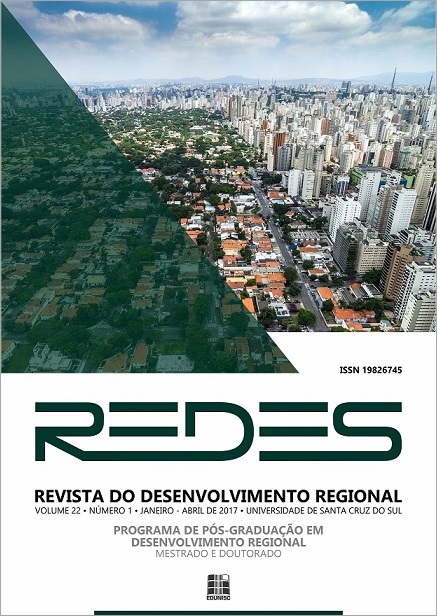Oiapoque, aqui começa o Brasil: a fronteira em construção e os desafios do Desenvolvimento Regional
DOI:
https://doi.org/10.17058/redes.v22i1.8532Palabras clave:
Oiapoque. Fronteira. Desenvolvimento e Organização Espacial.Resumen
O Município de iapoque é a única fronteira brasileira com um território europeu ultramarino, a Guiana Francesa. Particularmente, essa região e sua condição de fronteira se depara com desafios para sua efetiva inserção no processo de desenvolvimento regional, uma vez que apresenta condições distintas das outras fronteiras brasileiras com países autônomos, independentes e envolvidos em acordos transfronteiriços. O Brasil e a Guiana Francesa vivem em descompasso diplomático de restrições que limitam a migração, a cooperação, a solidariedade e as relações comerciais. Nesse sentido, as práticas socioespaciais e econômicas, pautadas nessas dinâmicas de relações restritivas à livre circulação de pessoas e ao comércio, constroem-se muitas vezes à revelia do Estado. Os desafios regionais para o desenvolvimento de Oiapoque abordados neste artigo evidenciam que a invisibilidade social, o isolamento territorial e a condição “marginal” de fronteira são contextos que estão sendo rompidos pelas novas dinâmicas da organização socioeconômica e política emergidas nas últimas décadas.Descargas
Los datos de descarga aún no están disponibles.
Descargas
Publicado
2016-12-31
Número
Sección
Artículos
Licencia
Declaración de Derecho Autoral y Transferencia de Derecho Autoral El autor debe declarar que el artículo es original (no fue publicado previamente), no infrinyendo cualquier derecho autoral o otro derecho de propiedad de terceros. Sometido el artículo, la Revista Redes se reserva el derecho de efectuar, en los originales, alteraciones de orden normativo, ortográfico y gramatical, con vistas a mantener el padrón culto de la lengua, pero respetando, el estilo de los autores. Los trabajos publicados pasan a ser propiedad de la Revista REDES, siendo que, las opiniones emitidas por los autores de los artículos son de responsabilidad de los mismos.Cómo citar
Oiapoque, aqui começa o Brasil: a fronteira em construção e os desafios do Desenvolvimento Regional. (2016). Redes, 22(1), 474-493. https://doi.org/10.17058/redes.v22i1.8532



